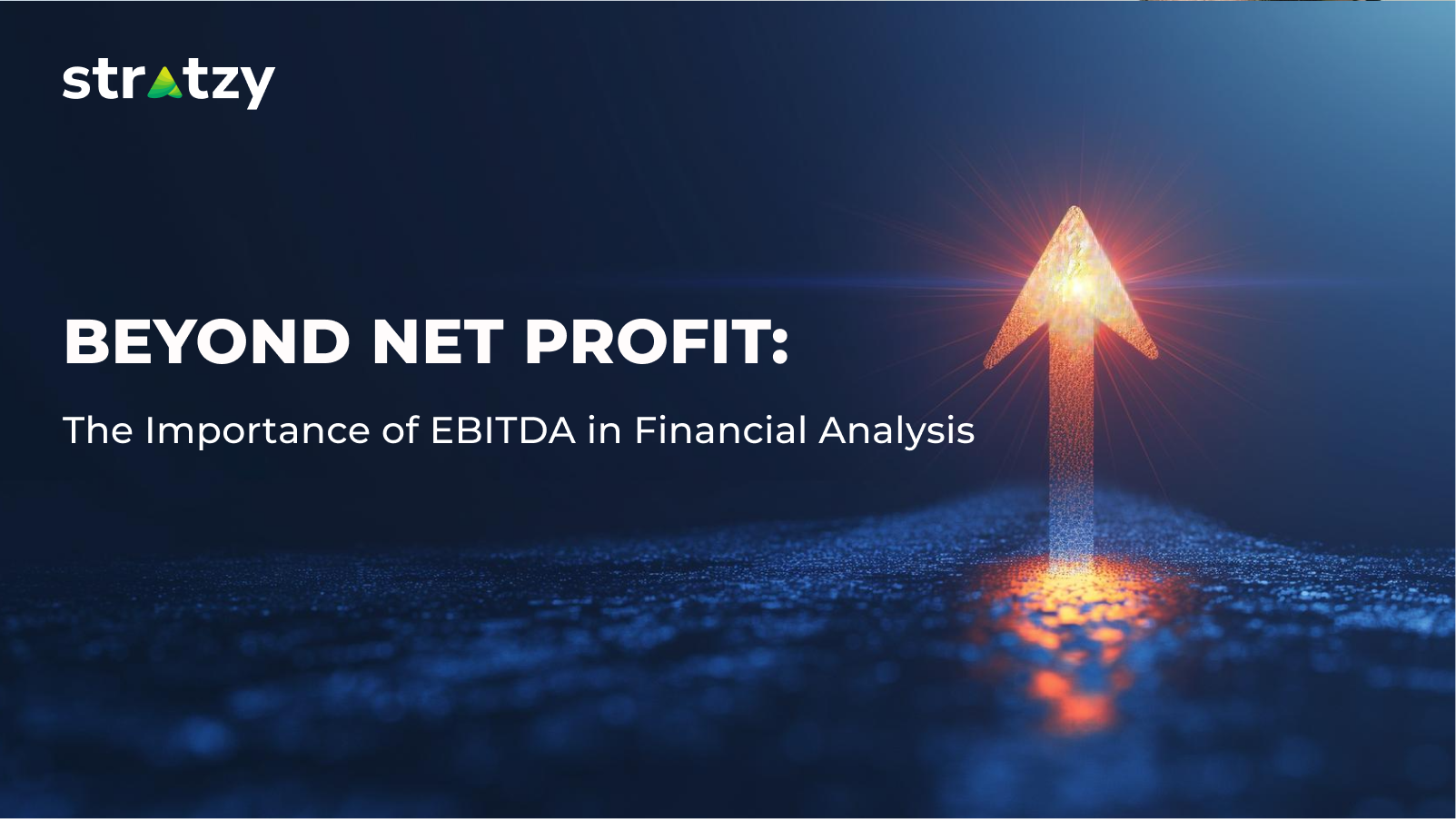Beyond Net Profit: The Importance of EBITDA in Financial Analysis

Imagine you're running a small tea stall in the bustling streets of Mumbai. Every day, you sell hundreds of cups of chai, and while you're thrilled to see the money rolling in, you also know there's more to the story than just the cash in your hand. You need to pay for tea leaves, milk, sugar, rent, utilities, wages, and even taxes. At the end of the month, you tally up your earnings and subtract all these expenses to see your true profit. But what if you want to know how your tea stall is performing purely based on your tea-making skills and customer service, without factoring in the rent or taxes? This is where EBITDA comes into play.
Why Do Research Houses Highlight EBITDA Alongside PAT?
Many research houses present EBITDA alongside PAT (Profit After Tax). While PAT is the final profit figure of a company, the emphasis on EBITDA raises the question: why is it highlighted separately? This blog aims to decode EBITDA, examining its significance in financial analysis, and its relationship with Gross Profit and PAT.
The snapshot below clearly shows that research houses highlight EBITDA alongside PAT.
Source: Antique stock Broking Research Report
Before understanding EBITDA, we first need to understand Gross Profit and Net Profit.
Gross Profit Explained: The Chaiwala’s Tea Stall Example
Gross profit is a company's profit after deducting the costs associated with producing and selling its products or services. Gross profit is calculated on a company's income statement by subtracting the cost of goods sold (COGS) from total revenue. Cost of goods sold (COGS) is the direct cost associated with producing the product or service.
Let’s understand the Gross Profit with an example of Chaiwala’s Tea Stall.
Net Profit: The Final Profit Figure
Net profit, also known as Profit After Tax (PAT), is the amount of money a company has left after subtracting all its expenses from its total revenue. These expenses include operating costs, interest, taxes, depreciation, and amortization. Essentially, net profit is the final profit figure that indicates how much a company has truly earned over a specific period, reflecting its overall financial health and profitability.
Let's take an example of a small tea stall, In one month, the total revenue from selling tea is ₹50,000. The stall incurs the following expenses:
- Cost of Goods Sold (tea leaves, milk, sugar): ₹15,000
- Operating Expenses (rent, utilities, wages): ₹10,000
- Interest on a small loan: ₹2,000
- Taxes: ₹3,000
- Depreciation on equipment (stove, kettle): ₹1,000
To calculate the Net Profit, subtract all these expenses from the total revenue:
Net Profit=Total Revenue−(Cost of Goods Sold+Operating Expenses+Interest+Taxes+Depreciation)
Net Profit=₹50,000−(₹15,000+₹10,000+₹2,000+₹3,000+₹1,000)
Net Profit=₹19,000
After understanding Gross Profit and Net Profit, it becomes easier to grasp EBITDA. Let's get into the concept of EBITDA and how to use it effectively.
From Gross Profit and Net Profit to EBITDA
After understanding Gross Profit and Net Profit, it becomes easier to grasp EBITDA. Let's now delve into the concept of EBITDA and how to use it effectively.
What is EBITDA and Why Does It Matter?
EBITDA stands for Earnings Before Interest, Taxes, Depreciation, and Amortization. It shows the earnings generated from a company’s core operational activities, providing a clear picture of its operational efficiency. By focusing solely on the profits derived from operations, EBITDA allows us to see how well a company is performing at its core business activities.
In simple terms, EBITDA is calculated by subtracting the company's production costs from its sales revenue. If the result is positive, it means the company is EBITDA positive, indicating good operational performance. Conversely, a negative EBITDA suggests the company is struggling at its operational level.
Comparing EBITDA with Peers
One of the key advantages of EBITDA is its usefulness in comparing the operating efficiency of companies within the same industry. By examining EBITDA, investors and analysts can measure a company's performance against its peers, identifying strengths and weaknesses in its business model.
EBITDA Margin: A Key Indicator of Operational Efficiency
In addition to EBITDA, there is another important metric: the EBITDA margin. This is derived by dividing EBITDA by Sales
The EBITDA margin makes it easy to compare the relative profitability of companies of different sizes within the same industry. A higher EBITDA margin indicates that a company is effectively minimizing its costs, which is a positive sign of operational efficiency. Conversely, a lower EBITDA margin suggests potential issues in the company's cost management.
Understanding EBITDA Margin: What It Tells Us
- Higher EBITDA Margin: Companies with higher EBITDA margins compared to the industry average and their historical results are generally more efficient. This efficiency increases the likelihood of gaining a sustainable competitive advantage and protecting profits over the long term.
- Lower EBITDA Margin: Companies with lower EBITDA margins compared to their peers and declining margins may raise red flags. This could indicate underlying weaknesses in the business model, such as targeting the wrong market or having ineffective sales and marketing strategies.
Core messages:
Understanding the differences and connections between Gross Profit, Net Profit, and EBITDA unlocks the secrets of accurate financial analysis. Gross Profit gives us a glimpse of a company's core operations, while Net Profit shows the bottom line after all expenses. But it's EBITDA that reveals the true operational performance, free from non-operational costs like interest, taxes, depreciation, and amortization. This insight is invaluable for investors and analysts. Want to dive deeper into how these metrics shape investment strategies and business decisions? Stay tuned for our upcoming blogs where we'll explore these concepts further and uncover more financial insights!
